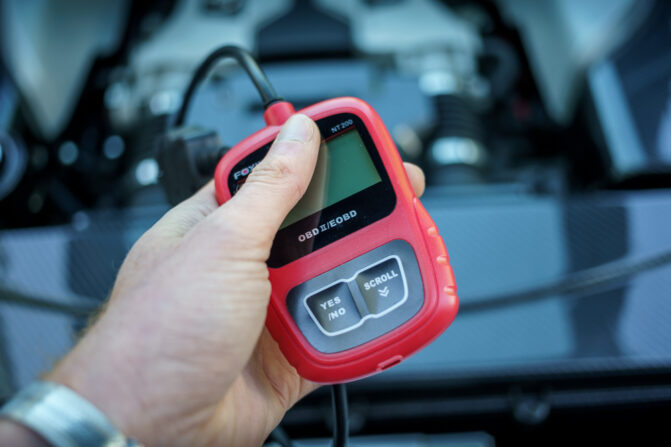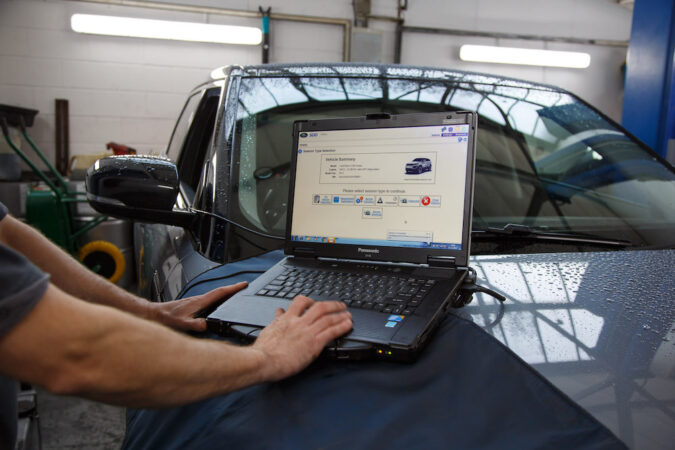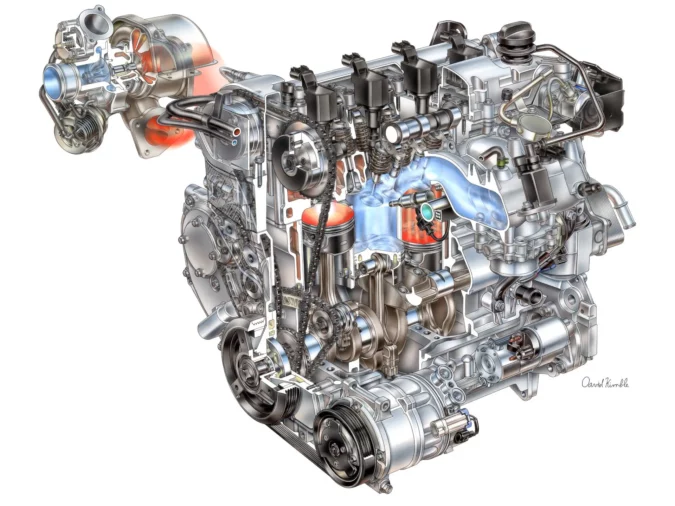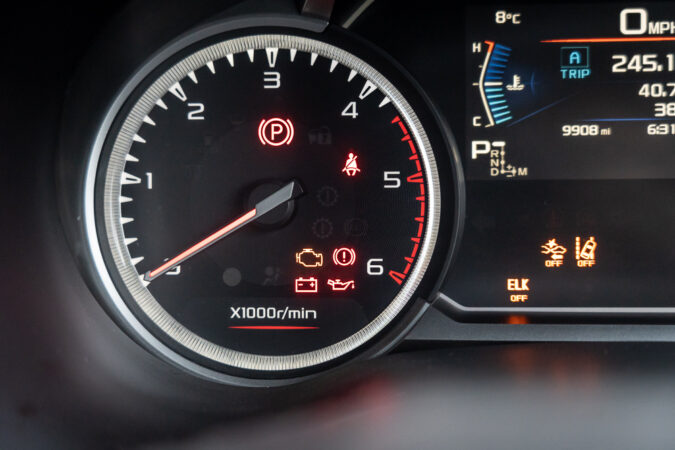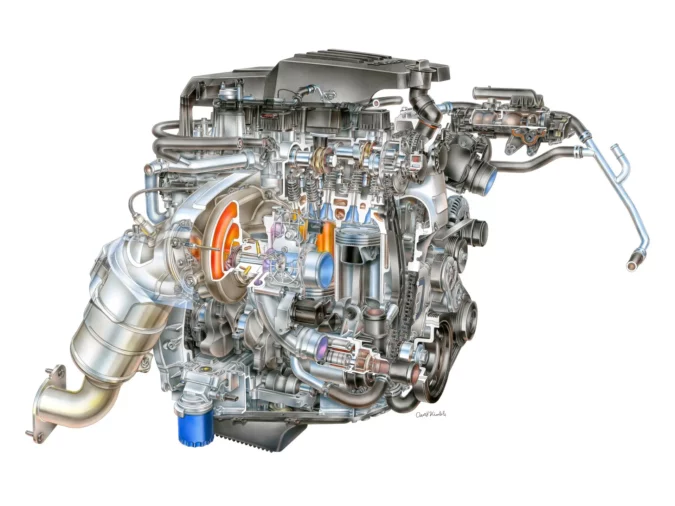Have you gotten the check engine light and the code P0327? Well, if that is the case, then you are at the right place because, in this article, we are going to give everything to help you out with how to solve this problem with this DTC code.
Troubleshooting is a true mastery that not a lot of people know. People are not familiar with solving problems like these with their cars because they are afraid to learn something new or break something. Which you shouldn’t be afraid of.
Especially when it comes to car sensor-related problems like this code in our case. And honestly, sorting these problems is really easy to do since there is not a lot to it. The main thing is that you shouldn’t be discouraged from learning something new and trying new things.
These things will save you hundreds, or even thousands of dollars in the long run. That’s why you should make sure that you follow us closely while we explain everything about this problem from start to finish.
First, we are going to learn what is car diagnostics, and then we will take a look at what is a knock sensor. We will then take a look at the knock sensor location and then when we are ready, we will elaborate on the problem with the P0327 code.
We will cover the meaning, causes, symptoms, and how to diagnose it. So, if you want to learn more about this problem, feel free to follow along.
Car Diagnostics
Now let’s cover a very interesting topic before we dive into the P0327 code. And that is, what is car diagnostics in general and how this procedure is done the right way? So, let’s elaborate on this topic.
So, what is car diagnostics? Well, car diagnostics is the procedure, or better said, a set of procedures that are taken in order to solve a problem on your vehicle. It is a problem-solving procedure, so having that problem-solving mindset is always a good thing.
Nevertheless, modern diagnostics is a bit different compared to old-school diagnostics where you relied mostly on audible symptoms to diagnose the problem. Modern cars are so much more refined and improved.
They pack dozens of sensors that make sure that everything works in the recommended spec. And the PCM (powertrain control module) is constantly testing these sensors to determine if they are good or not.
And if some of these tests are not successful, the PCM will decide to show the check engine light. At first glance, you might have no idea why this light turned on. And for this purpose, you will need something known as an OBD2 code reader. All cars produced after 1996 are equipped with this port. So, you definitely have one.
You just plug this code reader in and you are able to read the codes. And on some better-equipped tools, you can also read live data that the sensors produce.
If you don’t have the live data option, you will need to get a multimeter. So, you diagnosed a P0327 code and you test the knock sensor. This tool will allow you to measure different electrical properties like continuity, voltage, or resistance. Overall, these are the tools and the procedures.
Knock Sensor
So, we have covered what is car diagnostics and the tools that you will need in order to sort out the P0327 code, now let’s take a look at what is a knock sensor in general. A lot of people are confused by this sensor and do not know what it really does. So, let’s elaborate.
So, what is a knock sensor? Well, a knock sensor is simply a microphone that works at specific frequencies and detects abnormalities in the engine work.
So, we can say that the knock sensor is listening all of the time for abnormal sounds inside of the engine block and then helps the engine battle these abnormalities.
The engine knock is a situation where the ignition inside of the cylinders is not particularly good. This situation is known as spark knock, pinking, or simply as a knock.
When this knocking occurs, the ignition of gas inside the cylinder is premature, also known as pre-ignition. And once the pre-ignition occurs and the gas ignites before the end of the stroke, you get that knocking sound to occur.
There could be also a separate unplanned detonation in the combustion chamber which is separate from the controlled detonation from the spark plug. So, when these two detonations collide with each other there is a knocking sound.
This knocking sound can be caused by a few different things. But the most common cause is the carbon deposits, low octane fuel, or simply bad ignition timing of the engine.
And what the knock sensor does is simply listen to abnormalities and send this data to the PCM. Then the PCM adjusts the ignition timing in order to adjust the work of the engine. So, the engine does not knock anymore.
P0327 Knock Sensor Location
Now that we learned what the knock sensor does before we start elaborating on the P0327 code, let’s take a look at the knock sensor location. Where this sensor is located on your vehicle?
Well, the knock sensor is located only on the engine block. The engine block is basically the core of your internal combustion engine. This is a big solid metal piece where the pistons move up and down.
The knock sensor can often be found somewhere in the middle of the piston travel. This is for the purpose of better noticing the abnormal frequencies inside the cylinder also known as knocks.
But how many of these sensors do you have? If you have an inline engine, like an inline-4, or cars with an inline-6 engine, for example, you only have one of these sensors on your vehicle. Like in this case with the code P0327 code, you get a code for sensor 1. This is the only sensor in this engine.
But in V6, V8, V10, and V12, there are two of these sensors mounted on your car. One of them on the left side of the block and the other on the right side of the block.
So, in this case, you should know which is sensor 1 and which is sensor 2. In order not to confuse the two of them.
Just a hint, sensor 1 is located where cylinder number 1 is located. While sensor 2 is located on the bank where cylinder number 2 is located. This means that this sensor is on the opposite bank.
When you look at the V-engine from the front, bank 1 should always be on the right side, while bank 2 should always be on the left side. Let’s move to the definition of the P0327.
P0327 Knock Sensor 1 Circuit Low Input Bank 1
Now let’s take a look more at the code P0327 and see more about the meaning of this code in general. What is the general definition of this code?
Well, the simple definition of this code is “P0327 Knock Sensor 1 Circuit Low Input Bank 1”. So, what does this mean?
This basically means that you have low voltage output from the sensor. This sensor produces a voltage when the engine is working. This means that the knock sensor doesn’t have a constant voltage supply line like other sensors on your car. This is only a two-wire sensor.
There is only a ground wire, and the second wire is the sensor output wire that sends the output to the PCM. And based o this output voltage the computer determines if the engine is knocking or not. And then, it readjusts the ignition timing based on the input that it gets from the sensor.
So, as the car starts up, the sensor should produce at least 0.5v of power that is sent to the PCM. So, if this output is below 0.5v, you will get the P0327 code.
If you have an inline engine, this is your only sensor on the car. So, bank 1 shouldn’t confuse you a lot. But if you have a V8 or similar V-engine, you should locate the bank with cylinder number 1 in order to find this component and give it a good testing. Other similar knock sensor-related trouble codes include P0332 and P0325.
Later on, in the article, we are going to further elaborate more on the testing process and how it is done the right way. Now let’s take a look more about what are the possible causes for this problem to appear on your vehicle.
P0327 Code Causes
Now let’s take a look at the P0327 code and learn more about the causes for this code. Knowing the causes for this code is really important for you to determine what is causing the problem on your car.
This is why in the following chapters, we are going to learn more about what are the main causes for this issue on your vehicle, and then we will also dive into the symptoms of this problem. Then we will dive into diagnosing and fixing the issue. So, without further ado, let’s dive in.
1. Faulty Knock Sensor
The first and most common cause for the P0327 code is a faulty knock sensor. The knock sensor simply failed on the inside and the component is not receiving the knock frequency.
This could happen in any electronic component out there. There could be an inside failure of the sensor and simply shut off.
We all experienced these types of failures with a lot of electronic devices and this is quite common. Especially when we are dealing with low-quality sensors that are in some cases aftermarket.
There is nothing longer lasting than the proper OEM equipment on your car. So, if you replaced once a component with a non-OEM part, you will highly likely have to replace it once again anytime soon.
This is why we highly recommend that if this sensor is faulty and causing the P0327 code, replace the knock sensor with the right OEM replacement part. Now let’s continue with the following causes for this code.
2. Bad Connector
The second most common cause for this problem with the P0327 code is the bad connector. The bad connector is a common occurrence as well.
This is the connector that connects the knock sensor with the wiring harness. And inside of the connector or on the pins, there could be some rust development (be it surface rust vs deep rust) over time or the connector could simply fail from the heat in other situations.
This is why testing the pins is really important if you deem that the sensor is working well. Sometimes the wires that go from the connector to the wires can get melted
3. Open Ground
The next in our list of causes for the P0327 code is the open-ground connection. So, what is the open ground?
Well, every electrical component on your car should have a ground connection. If there isn’t a ground connection, there will be a problem with the work of the specific component. Or the component can even completely fail in some cases.
This is why you should make sure that you have proper ground to the connector of your knock sensor as well. If you don’t have a ground, then the problem should be elsewhere in the electrical wiring. Some of the wires are probably burnt or damaged. Now let’s continue to the next cause of the P0327 code.
4. Damaged Signal Wire
The next probable cause for the knock sensor P0327 code is the damaged signal wire. So, what is the signal wire in this case?
Well, the signal wire is the wire that goes from the sensor to the PCM and delivers the right voltage. And what happens is that this wire can get damaged and this will cause it to short out.
So, in this case, you will have a low signal or no signal at all if the wire is completely cut off. This is why you should inspect the wiring closely and see if there are some wires that are damaged like in this case with the signal wire.
5. PCM Has Failed
The last probable cause for the P0327 code is the situation when your PCM has failed and is causing these codes to appear.
So, what is a PCM, and why it fails? Well, the PCM is the powertrain control module, also known as ECU or ECM. This is the main computer of the car.
And what can happen in some cases is that this computer can fail and cause problems like these to happen.
So, if you get the check engine light all the time and some weird codes that do not make sense, this could be the cause behind the problem.
That’s why if you are suffering from issues that don’t really make sense, you can also consider that the PCM has probably failed as well. But what are the symptoms of this P0327 code? Let’s elaborate more on that next.
P0327 Code Symptoms
Now let’s move on and cover the symptoms of the P0327 code, knowing the symptoms is always useful when it comes to uncovering a problem with your car. Especially when it comes to sensors where the work of the engine will be really off. So, what are the symptoms of the P0327 code?
The first symptom is probably the check engine light. And since you are here, you are probably aware of the check engine light.
Many people think that there is a bad knock sensor sound. But such symptoms of a bad knock sensor, in reality, do not exist since the sensor does not produce any type of sound.
What makes more sounds is the engine. As we noted previously, the knock sensor is detecting abnormalities in the work of the engine and adjusts the ignition timing. So, if the sensor is broken, the computer will not be able to adjust the ignition timing and your engine could start producing knocking noises.
So, if there are knocks coming from the engine, one of the possibilities is that you have a bad knock sensor. Such noises include a knocking sound under your car when accelerating, a rod knock issue, in addition to typical engine knocking problems.
There could be also other symptoms that are associated with the problem. Namely, a slight fluctuation in the engine RPM. The RPM could increase and decrease by itself.
Also, there could be a loss of power from the engine, as well as engine hesitation from the engine. Even though these symptoms occur quite rarely. But how you can diagnose this sensor and the code P0327? Well, more about that, we are going to answer in the following chapter.
How To Diagnose A P0327 Code
Now let’s discuss how you can diagnose a P0327 code and learn more about the testing procedures of the knock sensor itself. When it comes to testing this sensor, it is important that you know that there are two properties that you can test.
One of them is the resistance and the second property is the voltage that the sensor makes. Let’s first learn more about how to test the resistance and then the voltage.
1. When it comes to resistance testing, you can do this by tweaking the multimeter to the ohm setting. Then unplug the connector from the sensor and place the probes, one on the first pin and the second on the other pin.
A good sensor should produce between 2,000 and 3,000 ohms. But don’t take our words for granted since not all sensors deliver the same ohm reading. Some can have higher resistance, while some can have lower resistance. In the video, you can see more about how the procedure is done the right way.
2. More precise measurement in our opinion is to measure the voltage that the sensor produces. For this, you will need to tweak the multimeter to measure AC voltage.
Once you set up the multimeter to measure AC, just place the two probes on the pins. Then give the sensor a few light taps and a good sensor should produce more than 1v of power. If the sensor is producing below 0.5v, then this sensor is bad. In the video above, you can also see how to test the wiring as well.
Cost To Replace Knock Sensor
So, what is the cost to replace the knock sensor and sort out the P0327 code? Well, the average replacement cost of a knock sensor is somewhere between $50 and $200.
It is a relatively cheap component. But we will recommend that you get a proper OEM replacement since these sensors can be purchased new and still malfunction.
Replaced Knock Sensor Still Getting Code
If you still get the code, then you probably have a faulty new sensor, you don’t install it properly, you installed and you didn’t clear the codes. Or you have a problem with the wiring from the connector to the harness.
P0327: In Conclusion…
In this article, we have covered quite a bit when it comes to the P0327 code. We covered the basics of car diagnostics, as well as the basics of knock sensors.
Then we elaborated more on the meaning of the P0327 code and also the causes and symptoms that it produces. Lastly, we learned how to diagnose this sensor and how much it will cost you to replace it.
FAQs On P0327
Now let’s answer some frequently asked questions.
What Is A Knock Sensor
A knock sensor is a special microphone that is mounted on the engine block. This sensor is listening at specific frequencies. And if it notices that there is a knock inside the engine, it will alert the PCM and the PCM will readjust the ignition timing.
What Does A Knock Sensor Do
The knock sensor is monitoring the combustion process. If it notices a knock, it will tell the engine to readjust the ignition timing so the knock is removed from the engine.
What Causes Engine Knock
Engine knock is often caused by low-octane gasoline. Engines do not tolerate low-octane gas, especially if your car is intended to run on premium. Another cause can be uneven ignition inside of the cylinder, so when you have two explosions, it will cause a knocking sound when these blasts collide with each other.
What Causes A Knock Sensor Code
A knock sensor code is often caused by a bad knock sensor. But also the problem can be caused because of bad wiring from the harness to the sensor, and also a bad connector.
How To Fix Knock Sensor Code
The first thing you need to do is to learn more about this code. Then test the sensor for resistance as well as for voltage. There is a range recommended range for resistance for each sensor. And also, test for AC voltage. So, if you tap the sensor, it should produce an AC voltage between 0.5v and 2v. If the sensor does not create enough resistance and voltage it means that it is dead.
How To Test A Knock Sensor Code
For this, you will need a multimeter. Just turn the multimeter to the ohm setting and place the red probe on one of the pins and the other probe on the other pin. A good sensor should produce anything above 1,000 ohms. Also, you can test for voltage, place the probes in the same way and tweak the multimeter to AC volts. If you tap the sensor it should produce anywhere between 0.5v and 2v depending on how strongly you tap it. This is a good sensor.

